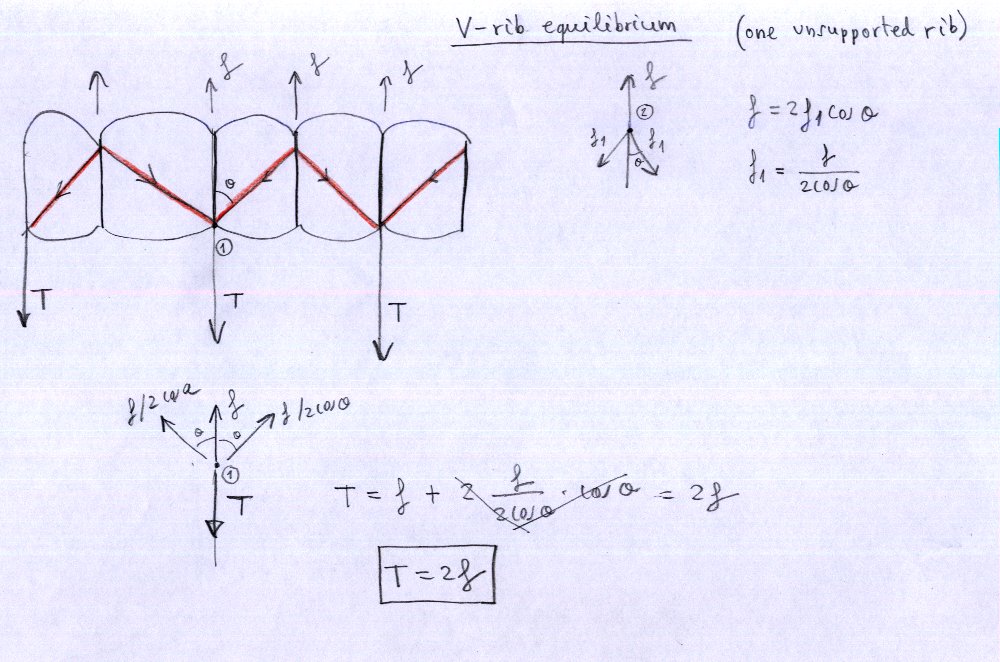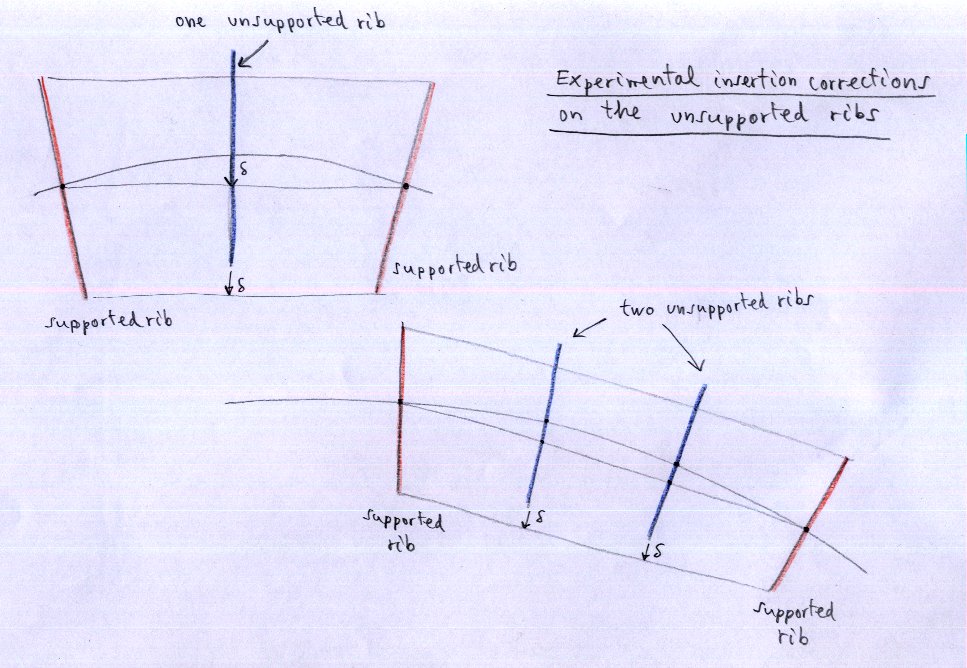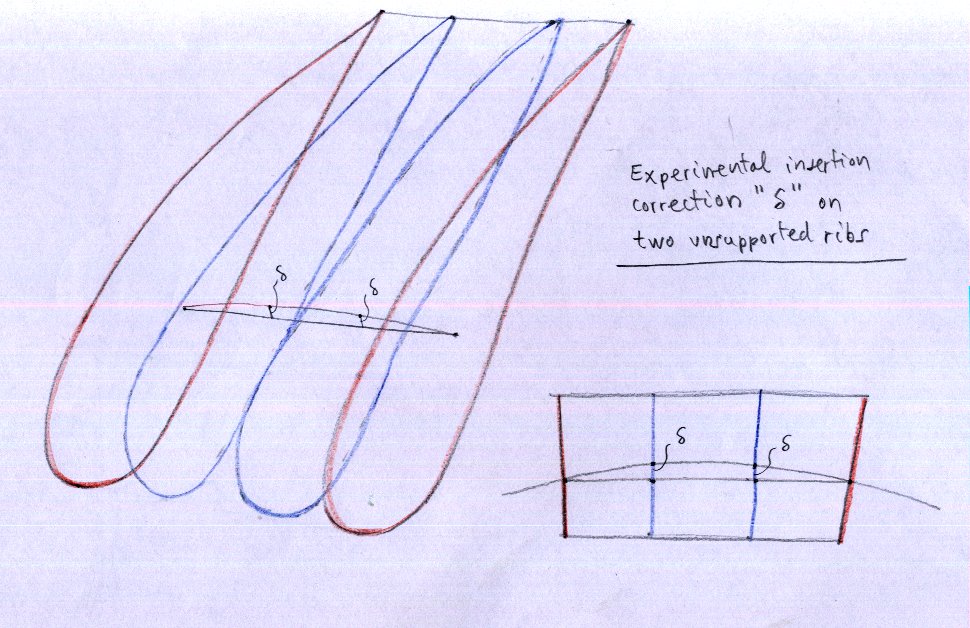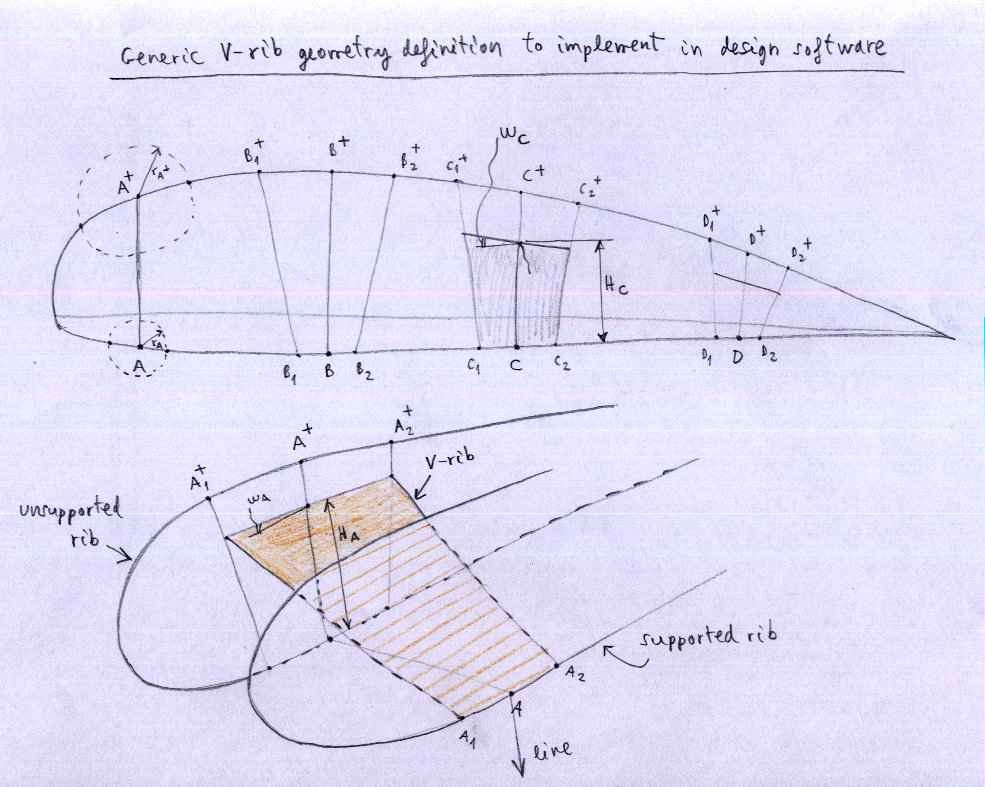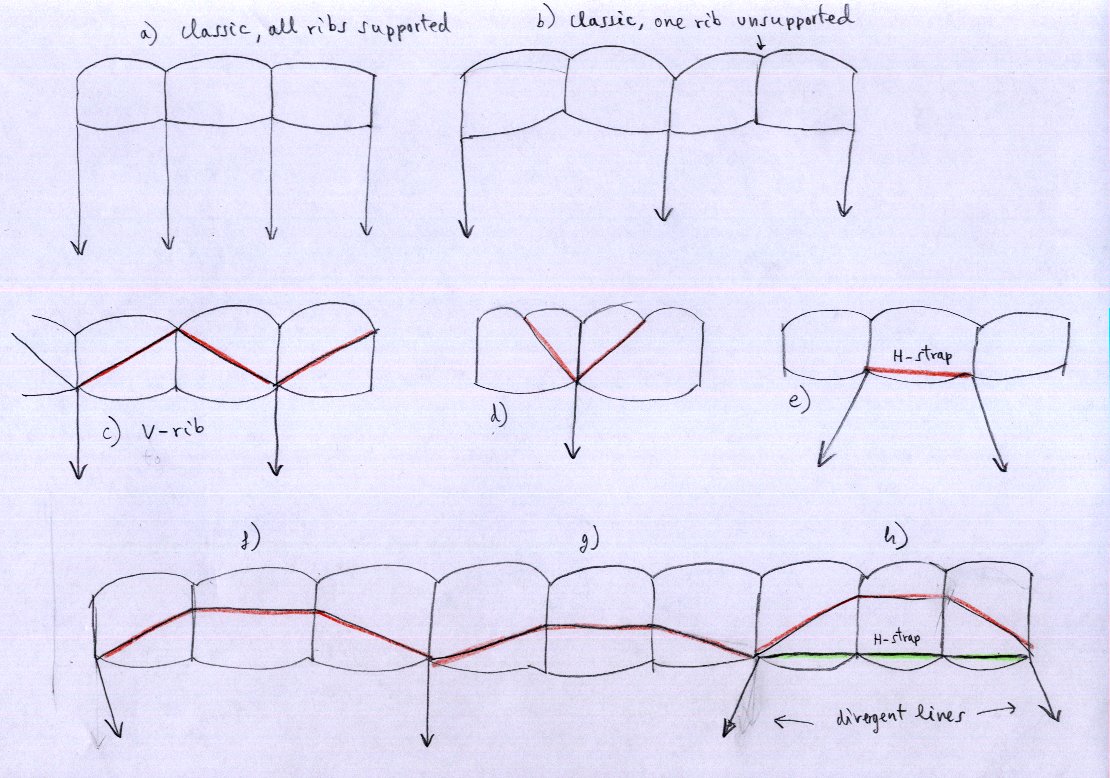7.1 Introduction
The
diagonal ribs (V-rib) are used primarily to reduce the number of anchors in the
sail, thus reducing aerodynamic drag and therefore increasing the
performance of the wing. The
diagonal ribs are formed by complete ribs or partial (only in the vicinity of the
anchor points), joining the intrados surface with the extrados surface of adjacent ribs.In
the case of partial ribs, it is common practice to link the top of the
"V" in a segment of the vertical rib, near the
top surface. We get the same effect and simplifies the construction and reduces weight. The
evolution between a full diagonal rib and partial diagonal rib is understandable
because of the need to leave ventilation holes in the diagonal ribs.
Flat straps (H-rib) , have another mission. They serve primarily to
obsorb the tractions generated by divergent lines or ribs. Its
use is advisable even in designs that do not include diagonal ribs, and
where there are lines that can generate traction in the intrados
panels. All
paragliders designed by the laboratory include these horizontal bands
(except gnuEASY design which has no divergent suspension lines, all
converging).



